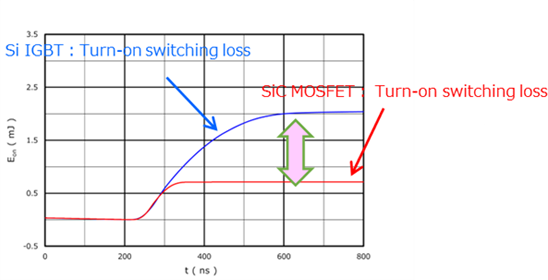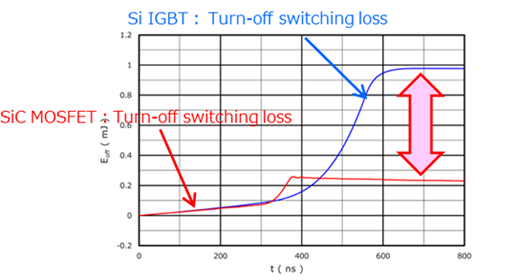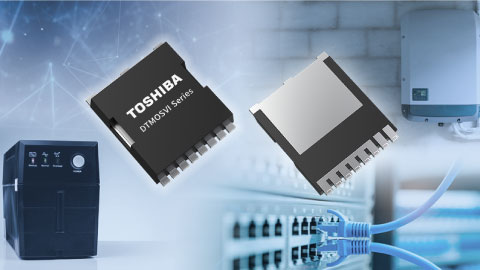- General Top
- SEMICONDUCTOR
- STORAGE
- COMPANY
-
My ToshibaSemicon
- Semiconductor Top
-
ApplicationsAutomotive
Body Electronics
xEV
In-Vehicle Infotainment
Advanced Driver-Assistance Systems (ADAS)
Chassis
IndustrialInfrastructure
BEMS/HEMS
Factory Automation
Commercial Equipment
Consumer/PersonalIoT Equipment
Healthcare
Wearable Device
Mobile
Computer Peripherals
-
ProductsAutomotive Devices
Discrete Semiconductor
Diodes
Transistors
Logic ICs
Analog Devices
Digital Devices
Wireless Devices
※
: Products list (parametric search)
Power SemiconductorsSiC Power Devices
※
: Products list (parametric search)
Isolators/Solid State RelaysPhotocouplers
Digital Isolators
Solid State Relays
Fiber Optic Transmitting Modules
※
: Products list (parametric search)
MOSFETsIGBTs/IEGTsBipolar Transistors※
: Products list (parametric search)
Diodes※
: Products list (parametric search)
MicrocontrollersMotor Driver ICsIntelligent Power ICs※
: Products list (parametric search)
Power Management ICsLinear ICs※
: Products list (parametric search)
General Purpose Logic ICsLinear Image SensorsOther Product ICsOther Product ICs
※
: Products list (parametric search)
-
Design & Development
-
Knowledge
- Where To Buy
- Part Number & Keyword Search
- Cross Reference Search
- Parametric Search
- Stock Check & Purchase
This webpage doesn't work with Internet Explorer. Please use the latest version of Google Chrome, Microsoft Edge, Mozilla Firefox or Safari.
require 3 characters or more. Search for multiple part numbers fromhere.
The information presented in this cross reference is based on TOSHIBA's selection criteria and should be treated as a suggestion only. Please carefully review the latest versions of all relevant information on the TOSHIBA products, including without limitation data sheets and validate all operating parameters of the TOSHIBA products to ensure that the suggested TOSHIBA products are truly compatible with your design and application.Please note that this cross reference is based on TOSHIBA's estimate of compatibility with other manufacturers' products, based on other manufacturers' published data, at the time the data was collected.TOSHIBA is not responsible for any incorrect or incomplete information. Information is subject to change at any time without notice.
require 3 characters or more.
What changes when Si MOSFET/IGBT is replaced with SiC MOSFET?
By replacing Si IGBT with SiC MOSFET, it is possible to reduce the size and weight of the equipment and achieve highly efficient power conversions due to high frequency operation. Comparison of characteristics of Si MOSFET/IGBT and SiC MOSFET are shown in Table1.
| Electrical Characteristics Symbol (Improvement) |
Relation on application use | Si material | SiC material | |
|---|---|---|---|---|
| MOSFET | IGBT (Built-in *FRD) |
MOSFET (Built-in SBD) |
||
| High Voltage range (Large) |
High Voltage range of set | ★★ | ★★★ | ★★★ |
| Switching Loss (Small) |
Efficiency (Smallness of the loss at the Turn-on/off time) |
★★ | ★ | ★★★ |
| Forward Voltage of Built in Diode (Small) |
Efficiency (Smallness of the loss at the energy for Diode) |
★★ | ★★ | ★★★ |
| Reverse recovery time of Built in Diode trr (Small) |
Efficiency (Smallness of the loss at the Turn-on) |
★ | ★★ | ★★★ |
Table 1. Comparison of characteristics of Si MOSFET, Si IGBT and SiC MOSFET
When Toshiba’s SiC MOSFET and Si IGBT are switched at Ta =25°C, the switching loss waves are shown in Figures 1(a) and 1(b). For SiC MOSFET, the turn-off loss and turn-on loss are reduced by 65% compared to Si IGBT.
i) The reduction in turn-on loss is due to the smaller trr・Irr of SiC MOSFET's built-in SiC SBD affecting the loss than Si IGBT's built-in Si FRD.
ii) The reduction of turn-off loss is influenced by the fact that SiC MOSFET has no accumulation of minority carrier and no loss due to tail current as in Si IGBT.


Related links
The following documents also contain related information.


